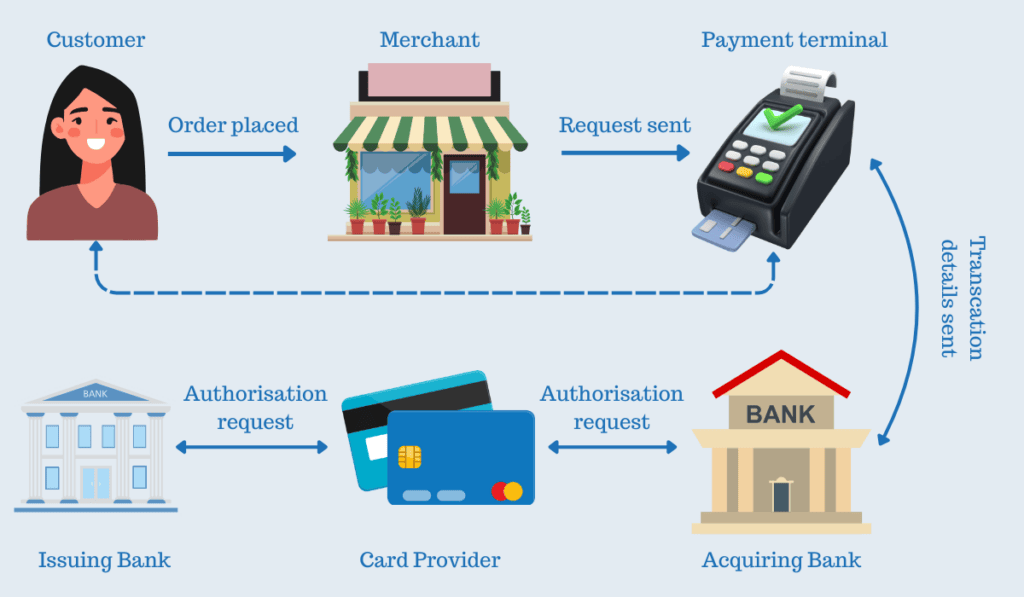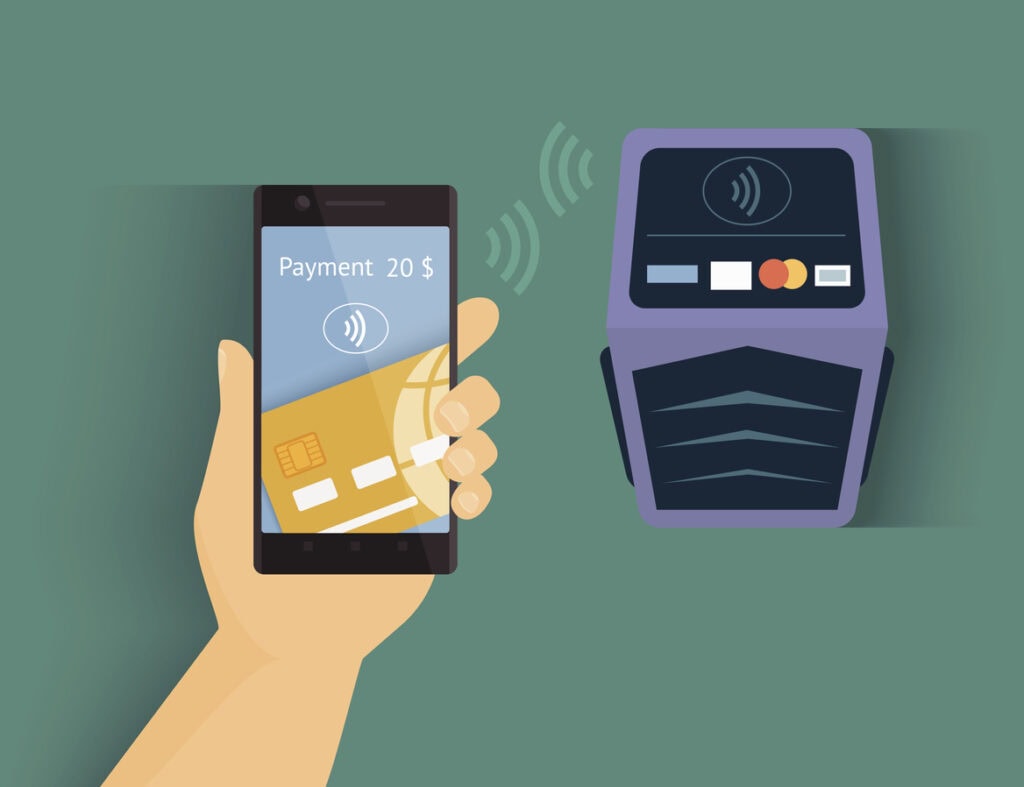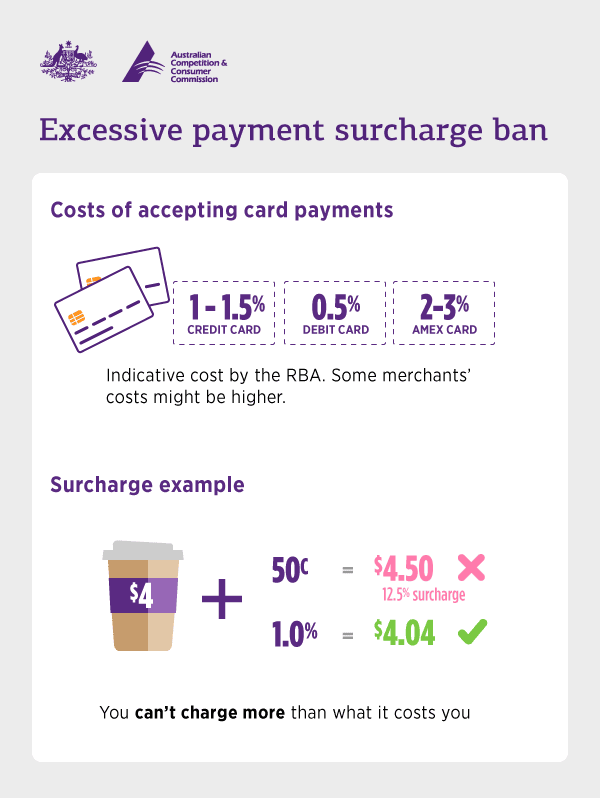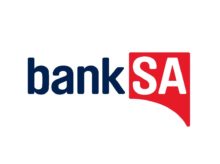- Businesses can charge a surcharge for paying by card, but the surcharge must not be more than what it costs the business to use that payment type.
- If a business charges a payment surcharge, it must be able to prove the costs it is based on.
- If there is no way for a consumer to pay without paying a surcharge, the business must include the surcharge in the displayed price.
Surcharging refers to the practice where merchants add an extra fee to the cost of a purchase when a customer pays using a card. This practice has been permitted in Australia since 2003, allowing merchants to surcharge any amount not exceeding the costs they incur to accept the transaction.
Despite a significant decline in the average costs for merchants to accept card payments, the prevalence of surcharging has increased between 2019 and 2022. The rapid adoption of payment innovations, such as contactless payments, has significantly expanded the use of card payments, especially for low-value transactions.
How does surcharging work?
Surcharging is a practice where businesses pass on the cost of processing certain electronic payments. All forms of payment, including the use of cash, incur costs to the business. However regulation, allows for debt and credit cards to be surcharged.
In Australia, there are specific rules and regulations that businesses must follow when applying surcharges. The surcharge must not exceed the actual cost of processing the payment. This means that businesses can only include costs directly related to accepting that particular payment method.
Businesses must also be able to prove the costs they used to calculate the surcharge. This ensures transparency and helps prevent excessive surcharging, which is illegal and can lead to significant fines and reputational damage. The Reserve Bank of Australia (RBA) and the Australian Competition and Consumer Commission (ACCC) provide guidelines and resources to help businesses comply with these regulations.

Reserve Bank of Australia’s Surcharging Standard
The Reserve Bank of Australia’s (RBA) surcharging standard aims to provide clear price signals to consumers about the costs associated with different payment methods. Excessive surcharging can undermine these signals. The standard promotes transparency and enforcement to prevent excessive surcharges.
Merchants receive straightforward information about their card acceptance costs, helping them make informed decisions about accepting higher-cost payment methods and whether to apply surcharges. When merchants do impose surcharges, consumers can trust that these reflect the actual underlying payment processing costs they are charged by their payment service provider If consumers believe a surcharge is excessive, they can file a complaint with the Australian Competition and Consumer Commission (ACCC).
Rules apply when a business applies a surcharge to particular cards.

These rules include:
- The surcharge must not be more than what it costs the business to use that payment type.
- The surcharge can only cover costs that are directly related to accepting that payment. For example, if a business has point-of-sale (or other) software included with their payment contract, they cannot surcharge the cost of these adjacent services to a customer.
- Whatever the surcharge amount, the business must be able to prove the costs they used to calculate it.
Ban on excessive payment surcharges
How much it costs a business to process a payment depends on the size of the business, the technology used, and the payment method.
This ban on excessive payment surcharges applies to:
- Visa
- MasterCard
- Eftpos
Generally the ban does not apply to other electronic payment methods. These include, but are not limited to:
- Buy now pay later (BNPL)
- PayPal
- Diners Club
- American Express
- taxi fares, whatever the payment type

Costs that businesses can include
The Reserve Bank of Australia sets out the costs that businesses can include when determining their reasonable costs of accepting payment types.
Before introducing a payment surcharge, businesses should read the ACCC’s Payment surcharges guide and the Reserve Bank of Australia guidance material. Consumers may also wish to read these guides for further information about how excessive payment surcharges are calculated.
The Reserve Bank of Australia is commencing its Review into Retail Payments Regulation. This review will examine the costs merchants face when accepting card payments and the framework for surcharging.
Statement from Australian Banking Association CEO Anna Bligh
The RBA’s rules allowing retailer surcharging are more than 20 years old. They are no longer fit for purpose given almost 90 per cent of payments are now made digitally.
This would be a win for consumers and lead to more clarity and certainty for them. It makes sense that consumers know the final price before they go to pay.
Our industry will work with the RBA, the Government and retailers through this review process to get a better outcome for Australians.
Banks are there to help merchants understand their current fees and how enabling Least Cost Routing could benefit their business.
Find Your Bank: merchant services




